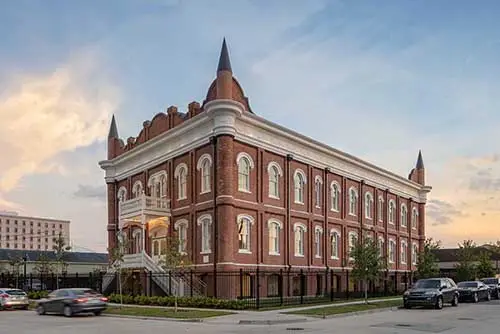Period Buildings with Modern Fenestrations
An Overview of Adaptive Reuse Projects Highlighting Window Treatments
- Article by:
- Aishwarya Jadhav
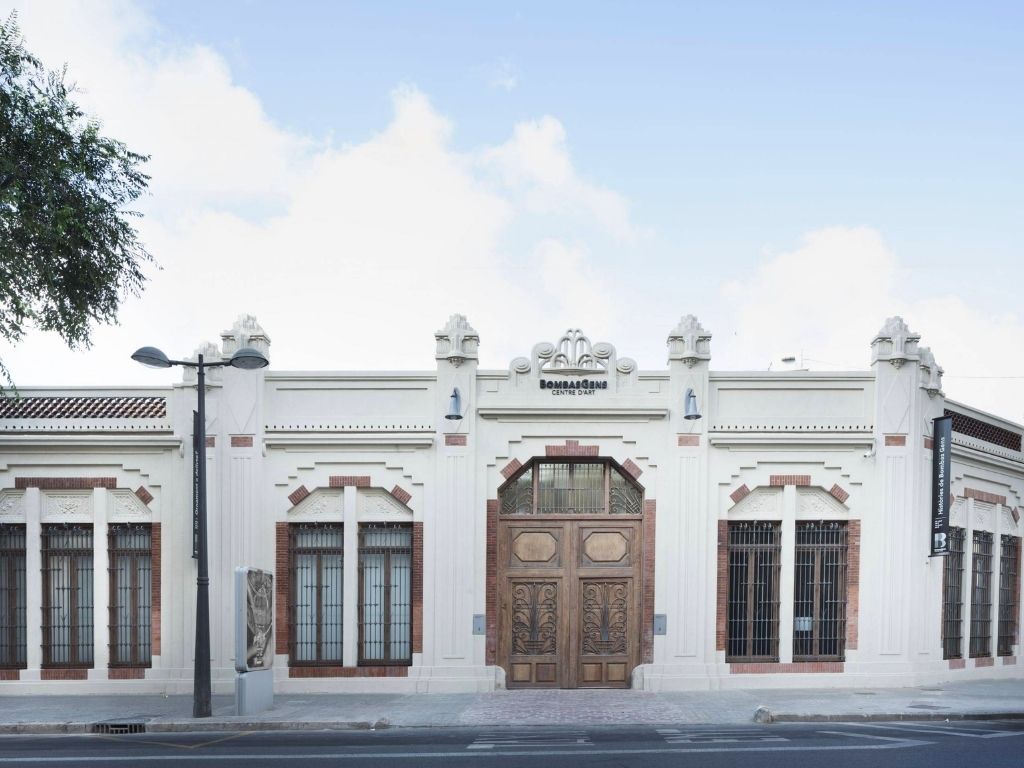
Some buildings are meant to last forever. When an iconic piece of architecture no longer serves a function, demolishing it and building something in its place is often unthinkable. Adaptive reuse means adapting older buildings to restore them for newer purposes. For example, converting a schoolhouse into an apartment building or an old residence gets converted into a hotel. Thus, beautiful architecture or historical landmarks do not go waste. In recent years, adaptive reuse has been in vogue for multiple reasons but primarily because of the increase in awareness of the effects of urbanism.
Types of Adaptive Reuse
Renovation
A renovation that replaces much of the building that may be in poor repair. In many cases, the basic structure and external appearance of the original building are maintained but the inside is completely different.

Integration
Building around the original structure such that it remains but is encompassed by a new building. For example, student apartments built into a historic water tower.
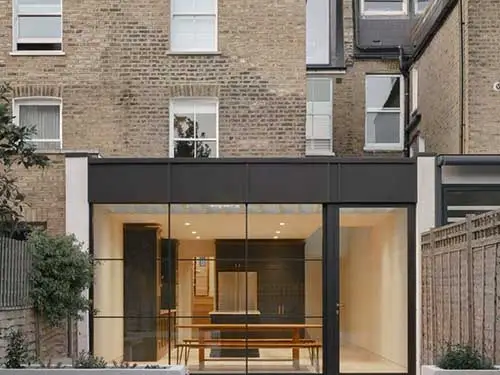
Historic Preservation
Reusing a historic building with an effort to preserve or restore its original state. For example, an art museum in an old factory that partially preserves elements of the original building.

Infrastructure
Repurposing of infrastructure such as an elevated highway that is converted into a linear park.

Facadism

Some of the most talked-about techniques of adaptive reuse are Facadism. Preserving a society's cultural and architectural heritage while balancing city growth is a difficult task. This technique helps in preserving the façade of a building while constructing a new internal structure behind it. This offers an opportunity to compromise and preserve through adaptive reuse. Fenestrations are an integral part of facades. They play a vital role in determining the language of the elevational design, and thus, when one retains the original fenestrations while reusing them, they have to be diligently designed.
Some Examples with Recycled Fenestrations
Historic windows are important features that can be upgraded to meet energy efficiency, security, and other requirements without destroying the original character of the building. Federal energy saving standards and LEED rating targets, in particular, encourage use of highly energy efficient windows. That does not mean the historic windows should be trashed. Original windows define many buildings and are an integral part of our history, the architect’s building design, aesthetic, period craftsmanship, skills, materials and technology of the era.
1. Bulova Watchcase Factory Condos - US
Industrial building converted into luxury condominiums

Architects: BLD Architecture | Beyer Blinder Belle Architects
Location: Sag Harbor, Long Island, US
Window Types: E Series Aluminium Windows by Andersen Windows, Inc.
It's astonishing how a building's highlight is over 700 windows! The Watchcase factory was built in 1881 and had a distinctive Victorian Mill style. This was something the developers wanted to revitalize, and hence the same wooden windows were recreated after staying abandoned for nearly 35 years before they got reconstructed. The windows were exactly created in the same style as the older ones, on the basis of documented photos. From grid divisions to attaining the same wooden finish in aluminum, the architect's attention to detail and the reciprocity with the manufacturer are evident.
The E-windows used were modern windows with insulated glass and weather-resistant, whilst following the LEED energy codes. The beauty of this building lies in the retention of the original fabric of the building -- the original sill, the brickwork, all of it amalgamated into 63 meticulously crafted condominium residences.
Aluminum Windows
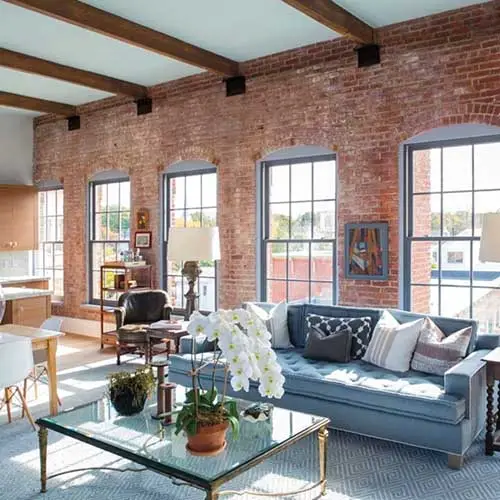
Weatherproof Insulating Glass
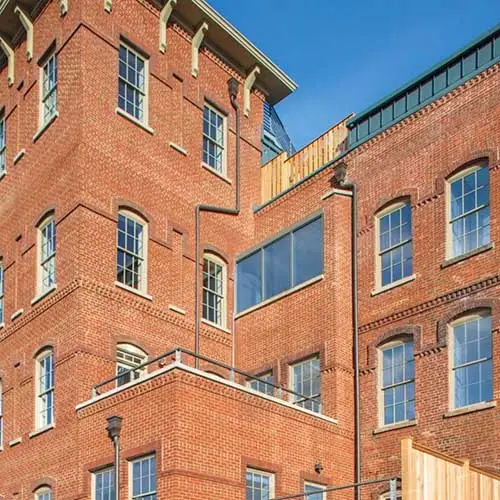
Retention of Original Windows
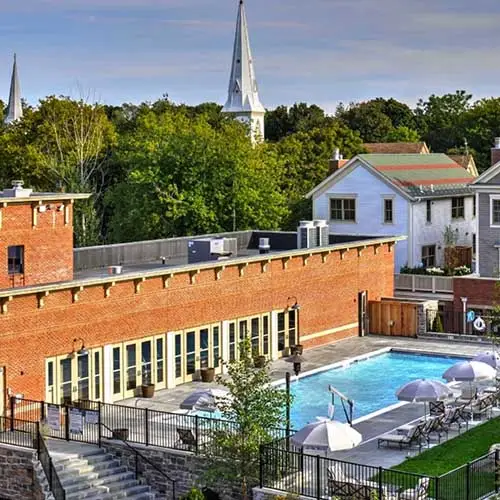
2. Harlem Boys & Girls Club - US
School building converted into a Boys & Girls Club

Architect: Dattner Architects
Location: New York City, NY, US
Window Types: Aluminum-Clad Wood Double-Hung Windows, Fixed Windows by Pella Windows
Dattner Architects had to find ways to preserve everything from the tall, curve-top windows and intricate cornices to the ornamental staircases and other vital architectural features defining the building to maintain the building's historical accuracy. The fenestrations were recreated based on old photographs and drawings. Every window was custom-designed to fit each opening especially. Most of the operable windows were rectangular-top single-hung windows.
The building's windows are monumental in size, with many ranging from 4' to 5' wide by 10' high. These sizes are adrift from the standard sizes, making the task complicated. From curating transition details to customizing aluminum extrusions for perimeters, the windows were renovated whilst maintaining the authentic historic features.
Raised Panel Doors
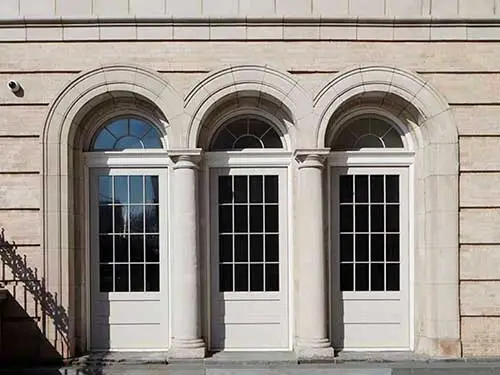
Aluminium Clad Wood Windows
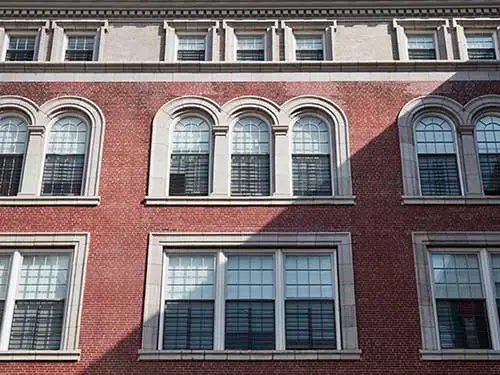
Monumental Windows

3. St. Mary's Catholic Church - US
Church renovation

Architect: Jerry MacNeil Architects Ltd.
Location: Potsdam, NY, US
Window Types: Honduran Mahogany Frames with Stained Glass by Marvin's Windows and Doors
The intention behind the project was to renovate only the stained glass windows, and then it was discovered that all of the windows were in bad condition. The process of remaking these windows was quite delicate. The stained glass were carefully removed from the original frame of old-growth pine and replaced with Honduran Mahogany With staggered finger joints for a strong profile. The project included 15 window frames with a size of 5' 17' to 6' X 18'.
The challenge here was that the windows were not symmetrical, and no two windows were alike. Thus it was a task of creating 15 different window frames. The architects followed multiple methods of measuring the windows to create the right frames, and the construction was completely paperless. Over 816 pieces were cut and joined to make the 15' x 23' Rose Window prominently displayed on the church's facade. The windows are now engineered and designed to last another 100 years.
Rose Window

Renovated Windows

Restored Stained Glass

4. Vegan House - Vietnam
Residence converted into a culinary community spot

Architect: Block Architects
Location: Ho Chi Minh City, Vietnam
Window Types: Jalousie Windows (Traditional Vietnamese Windows)
The highlight of this project is the quaint exterior of recycled window shutters finished with bright colors. With a very limited budget, the architects refurbished this 50-year-old house with the smart idea of combining the discarded shutters. The existing windows were used as the main element to create a unique visual. These windows are a traditional element of Vietnamese architecture. They are now reorganized into a new facade with varied colors till the rooftop and break the monotony of the street whilst as well as harmonizing with its ancientness.
Some windows are left open on the roof to provide the trees beneath with space and natural light. This place symbolizes growth, hopes for the future, and goodness from the traditional bedrock, yet another classic example of retaining heritage culture and architecture.
Interior Partition Shutters
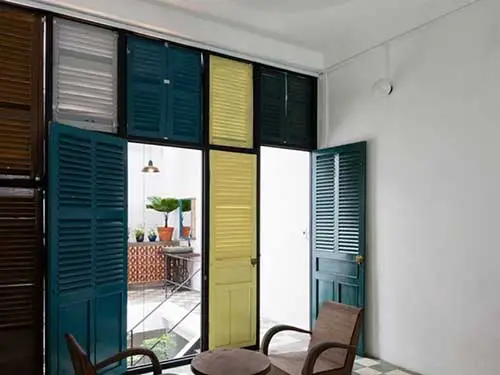
Jalousie Windows
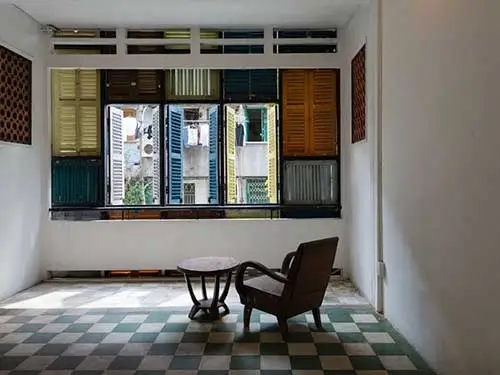
Painted Old Shutters

5. Bombas Gens - Spain
Factory converted into a heritage centre for artistic, social and cultural use

Architect: Selldorf Architects
Location: Valencia, Spain
Window Types: Exposed steel trusses and wooden frames
The street-facing, Art Deco façade welcomes the public through the main, sky-lit entrance into a central courtyard defined by hackberry trees and recovered sandstone cobbles that define the restrained space. Designed as a flexible gathering area for events, the courtyard provides a transition space between the Center’s urban surroundings and the experience of art within the four restored factory halls.
The large flexible galleries maintain the historic industrial vocabulary of the original factory with ample natural light, polished concrete floors, and exposed steel trusses. The exterior is a combination of new and restored clay brick walls and terracotta roof tiles. As an inclusive space dedicated to culture, this building in Valencia has found its way onto the international map of most chic places.
Obscured Glass in Galleries

Light Filtering through the Steel Trusses
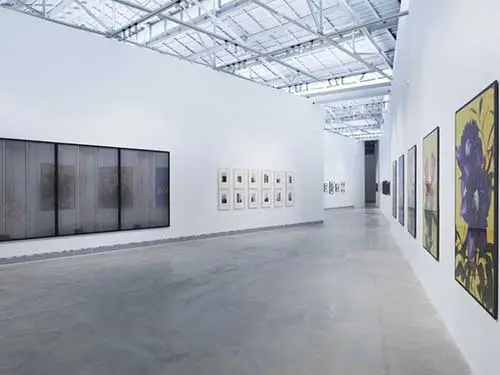
Balance of Openings
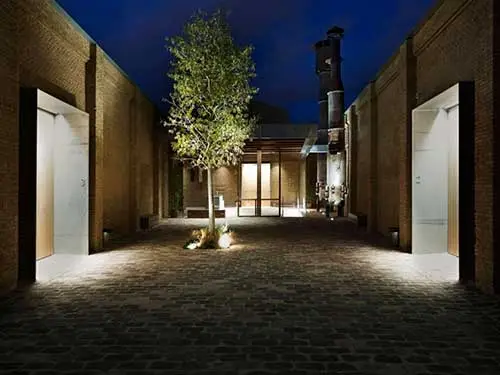
At Acelab
At Acelab, we provide insights from architects who have worked on a melange of projects that also include Adaptive Reuse. We interviewed Founding Partner Melissa Bauld Rome and Project Architect Mollie Burke of Rome Office, about how new windows helped restore the spirit of the old building in the Schoolhouse.
"A lot of the windows still existed, but the glass had obviously broken out. I would say we saved more than 50% of the original windows."

